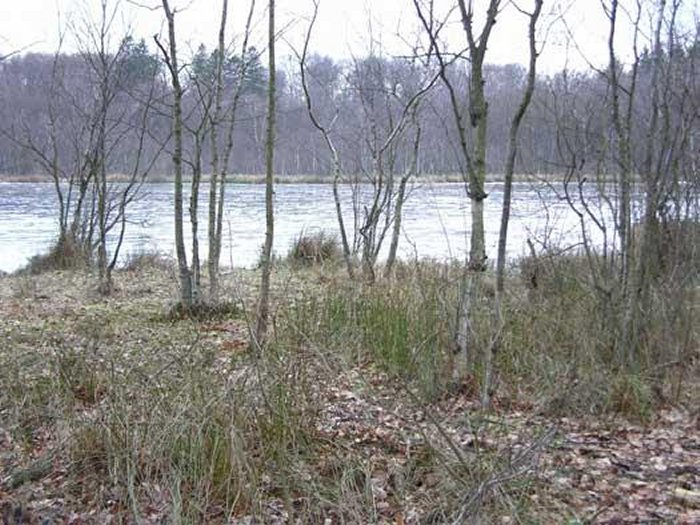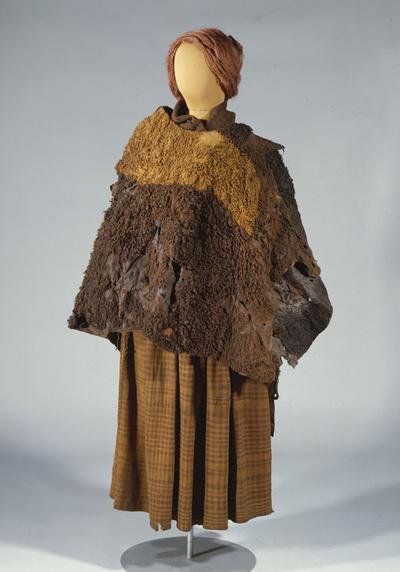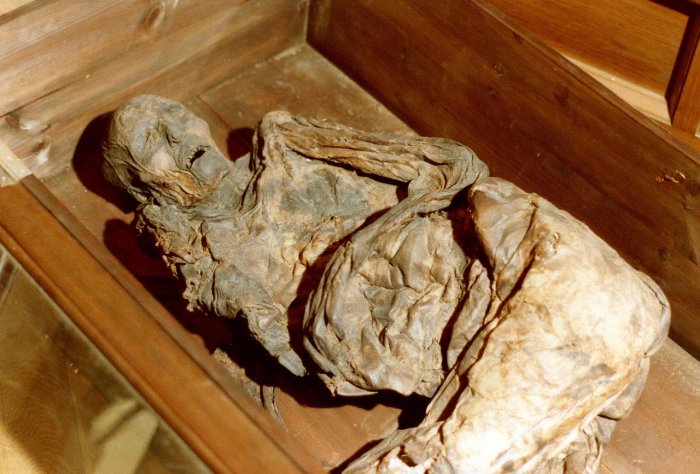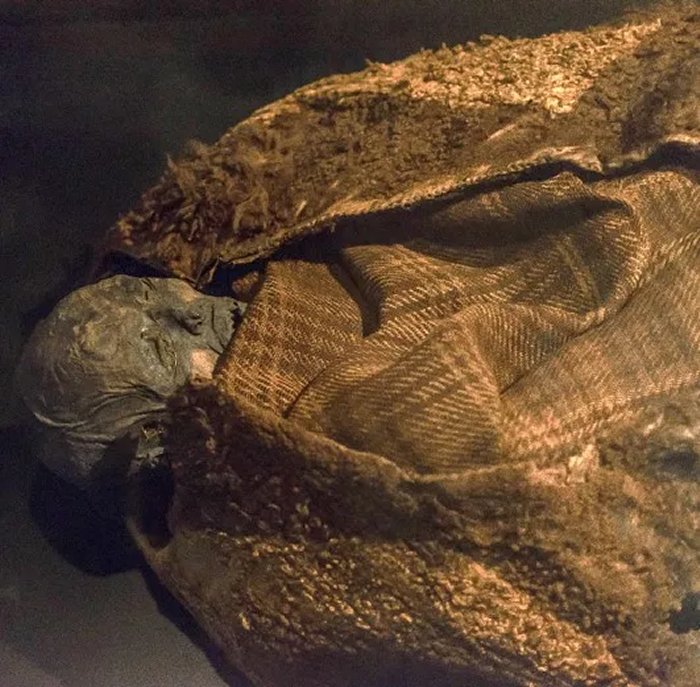Unsolved Mystery Of The Huldremose Woman: One Of The Best Preserved Bog Bodies Ever Found
Ellen Lloyd - AncientPages.com - In 1879, the body of a woman was found by workers digging peat turfs at Huldremose, Denmark.
Examination of the body revealed the woman died a violent death 2,000 years ago. She became known as the Huldremose woman and is today considered one of the best-preserved bog bodies ever discovered.
How her life came to an end remains an unsolved ancient mystery.
The woman found in a bog in Djursland died more than 2000 years ago. Image credit: National Museum of Denmark
The Huldremose woman was about 40 years old when she died. Today, it might sound as if she died at a young age, but back then, she was considered an old woman.
We do not know the exact circumstances surrounding the death of the woman from Huldremose, and why she was killed is unknown, but most likely, she was placed in the bog as a sacrifice.
How exactly she died has been debated. First, it was believed that the poor woman received a violent cut to the right upper arm and died as a result of blood loss. Later examinations have not confirmed this theory, and it is also possible that the injury occurred much later, perhaps during peat-digging in the bog. While the woman was alive, she broke her right leg, but this break healed again before she died.
Textile find from Huldremose. Image credit: National Museum of Denmark
Like most of the bog bodies found in Denmark, the woman from Huldremose was fully clothed. She wore a skirt of wool, a scarf, and a skin cape.
Bog body of the Huldremose woman. Image credit: Sven Rosborn
Her skirt was tied at the waist with a thin leather strap inserted into a woven waistband. The scarf was wrapped around the woman’s neck and fastened under her left arm with a pin made from a bird bone. The cape had been used a great deal and had 22 patches sewn on. The long period in the water of the bog has turned the clothes brown. Color analysis has shown that the skirt was originally blue, and the scarf was red.
The Huldremose Woman wrapped in her clothing. By Bradley Rentz — Own work, CC BY-SA 4.0.
She also had a ring on her finger, amulets in one of her skin capes, and two amber beads around her neck. The fact that the killers did not steal her possessions also suggests the Huldremose woman was sacrificed, but one cannot dismiss the possibility the woman was punished for some crime.
During the Iron Age, bogs were an extremely important resource for people. Turfs were dug there, which were used as building material and fuel. Some bogs contained iron ore, which was a raw material that, after processing, could be made into iron. The bogs, therefore, had a great significance in daily life.
To the Iron Age people, bogs and water regions were considered gateways to another world where gods resided. Making sacrifices to the gods was common, and sacrificing a human being was the greatest gift gods could receive.
Updated on December 16, 2023
Written by Ellen Lloyd – AncientPages.com
Copyright © AncientPages.com All rights reserved. This material may not be published, broadcast, rewritten or redistributed in whole or part without the express written permission of AncientPages.com
Expand for referencesMore From Ancient Pages
-
 Traces Of Ancient Near East Civilization In America – An Out-Of-Place Ancient Inscription – Part 2
Civilizations | Nov 13, 2020
Traces Of Ancient Near East Civilization In America – An Out-Of-Place Ancient Inscription – Part 2
Civilizations | Nov 13, 2020 -
 On This Day In History: Battle Of Lissa Took Place In The Adriatic Sea – On July 20, 1866
News | Jul 20, 2016
On This Day In History: Battle Of Lissa Took Place In The Adriatic Sea – On July 20, 1866
News | Jul 20, 2016 -
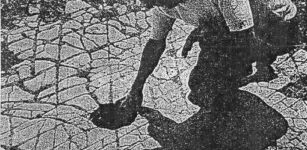 Oklahoma’s Ancient Mosaic Floor With Mysterious ‘Post Holes’ Could Re-Write History Of North America
Civilizations | Aug 10, 2018
Oklahoma’s Ancient Mosaic Floor With Mysterious ‘Post Holes’ Could Re-Write History Of North America
Civilizations | Aug 10, 2018 -
 Oldest Known Human-Made Nanostructures Found In Ancient Artifacts In Tamil Nadu
Ancient Technology | Nov 23, 2020
Oldest Known Human-Made Nanostructures Found In Ancient Artifacts In Tamil Nadu
Ancient Technology | Nov 23, 2020 -
 Secret Underground Ancient Teotihuacan Tunnel May Solve A Long-Standing Mystery And Reveal Royal Tombs
Civilizations | Jul 8, 2016
Secret Underground Ancient Teotihuacan Tunnel May Solve A Long-Standing Mystery And Reveal Royal Tombs
Civilizations | Jul 8, 2016 -
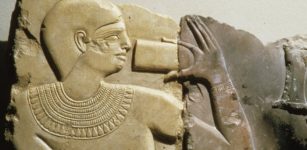 Mentuhotep II – The 11th Dynasty’s Pharaoh Who Reunited Egypt And Established The Middle Kingdom
Featured Stories | Oct 27, 2021
Mentuhotep II – The 11th Dynasty’s Pharaoh Who Reunited Egypt And Established The Middle Kingdom
Featured Stories | Oct 27, 2021 -
 Before The Pharaohs: The Evidence For Advanced Civilization In Egypt’s Mysterious Prehistory
Civilizations | Apr 14, 2017
Before The Pharaohs: The Evidence For Advanced Civilization In Egypt’s Mysterious Prehistory
Civilizations | Apr 14, 2017 -
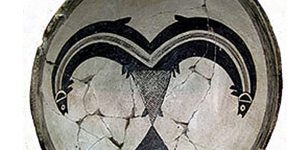 What Happened To Mimbres People – Recently Examined Puzzle Gives Some Clues
Archaeology | Dec 29, 2021
What Happened To Mimbres People – Recently Examined Puzzle Gives Some Clues
Archaeology | Dec 29, 2021 -
 Ancient Thriving Market Of Khan al-Tujjar (The Merchants’ Caravanserai) Discovered In Lower Galilee
Archaeology | Feb 20, 2024
Ancient Thriving Market Of Khan al-Tujjar (The Merchants’ Caravanserai) Discovered In Lower Galilee
Archaeology | Feb 20, 2024 -
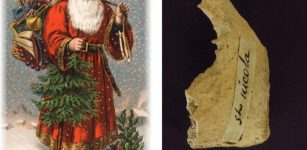 Examined Ancient Bone Suggests Santa Claus Was Real
Archaeology | Dec 8, 2017
Examined Ancient Bone Suggests Santa Claus Was Real
Archaeology | Dec 8, 2017 -
 What Does DNA From 1,700-Year-Old Individuals Dated To The Three Kingdoms Period Tell About Ancient And Modern Korea?
Archaeology | Jun 21, 2022
What Does DNA From 1,700-Year-Old Individuals Dated To The Three Kingdoms Period Tell About Ancient And Modern Korea?
Archaeology | Jun 21, 2022 -
 Green Comet Last Seen By The Neanderthals 50,000 Years Ago May Be Visible To The Naked Eye This Week
Archaeoastronomy | Jan 9, 2023
Green Comet Last Seen By The Neanderthals 50,000 Years Ago May Be Visible To The Naked Eye This Week
Archaeoastronomy | Jan 9, 2023 -
 Ancient Indian Text Re-Writes History Of Number Zero And Mathematics
Archaeology | Sep 15, 2017
Ancient Indian Text Re-Writes History Of Number Zero And Mathematics
Archaeology | Sep 15, 2017 -
 On This Day In History: Powerful And Controversial Roman Emperor Frederick II Excommunicated – On Sep 29, 1227
News | Sep 29, 2016
On This Day In History: Powerful And Controversial Roman Emperor Frederick II Excommunicated – On Sep 29, 1227
News | Sep 29, 2016 -
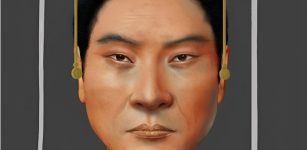 Facial Reconstruction Of Chinese Emperor Wu Who Lived 1,500 Years Ago
DNA | Mar 29, 2024
Facial Reconstruction Of Chinese Emperor Wu Who Lived 1,500 Years Ago
DNA | Mar 29, 2024 -
 A 2,700-Year-Old Urartians’ Ayanis Castle And Haldi Temple – Soon An Open-Air Museum
Archaeology | Aug 10, 2020
A 2,700-Year-Old Urartians’ Ayanis Castle And Haldi Temple – Soon An Open-Air Museum
Archaeology | Aug 10, 2020 -
 Cosmic Impact 12,800 Years Ago Forced Hunter-Gatherers In The Levant To Adopt Agricultural Practices
Archaeology | Oct 4, 2023
Cosmic Impact 12,800 Years Ago Forced Hunter-Gatherers In The Levant To Adopt Agricultural Practices
Archaeology | Oct 4, 2023 -
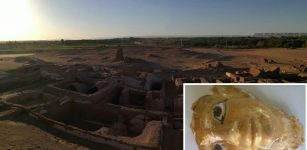 Five Ancient Roman Tombs With Different Architectural Style Discovered In Egypt
Archaeology | Aug 26, 2017
Five Ancient Roman Tombs With Different Architectural Style Discovered In Egypt
Archaeology | Aug 26, 2017 -
 Remains Of A 2,300-Year-Old Sunken Ship Discovered At Alamein Shore
Archaeology | Aug 12, 2023
Remains Of A 2,300-Year-Old Sunken Ship Discovered At Alamein Shore
Archaeology | Aug 12, 2023 -
 Pre-Columbian Americans Mastered Electricity – Ancient Inscription And Document Reveal Proof Of Advanced Ancient Technology
Ancient Technology | Feb 4, 2018
Pre-Columbian Americans Mastered Electricity – Ancient Inscription And Document Reveal Proof Of Advanced Ancient Technology
Ancient Technology | Feb 4, 2018

